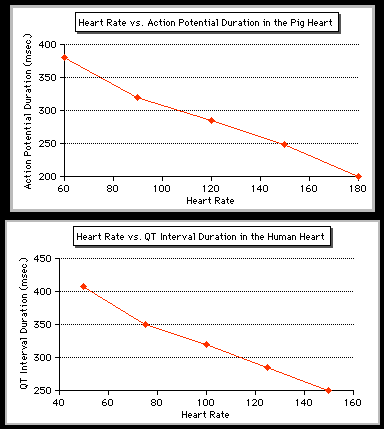
Action potential duration varies as a function of rate, and, as shown in the upper graph, becomes shorter at more rapid rates. This rate dependency of action potential duration is reflected on the body surface ECG by comparable rate dependent changes in the QT interval of human subjects. This is shown in the lower graph. In general, the normal QT interval in man rarely exceed 450 ms even at very slow heart rates.
